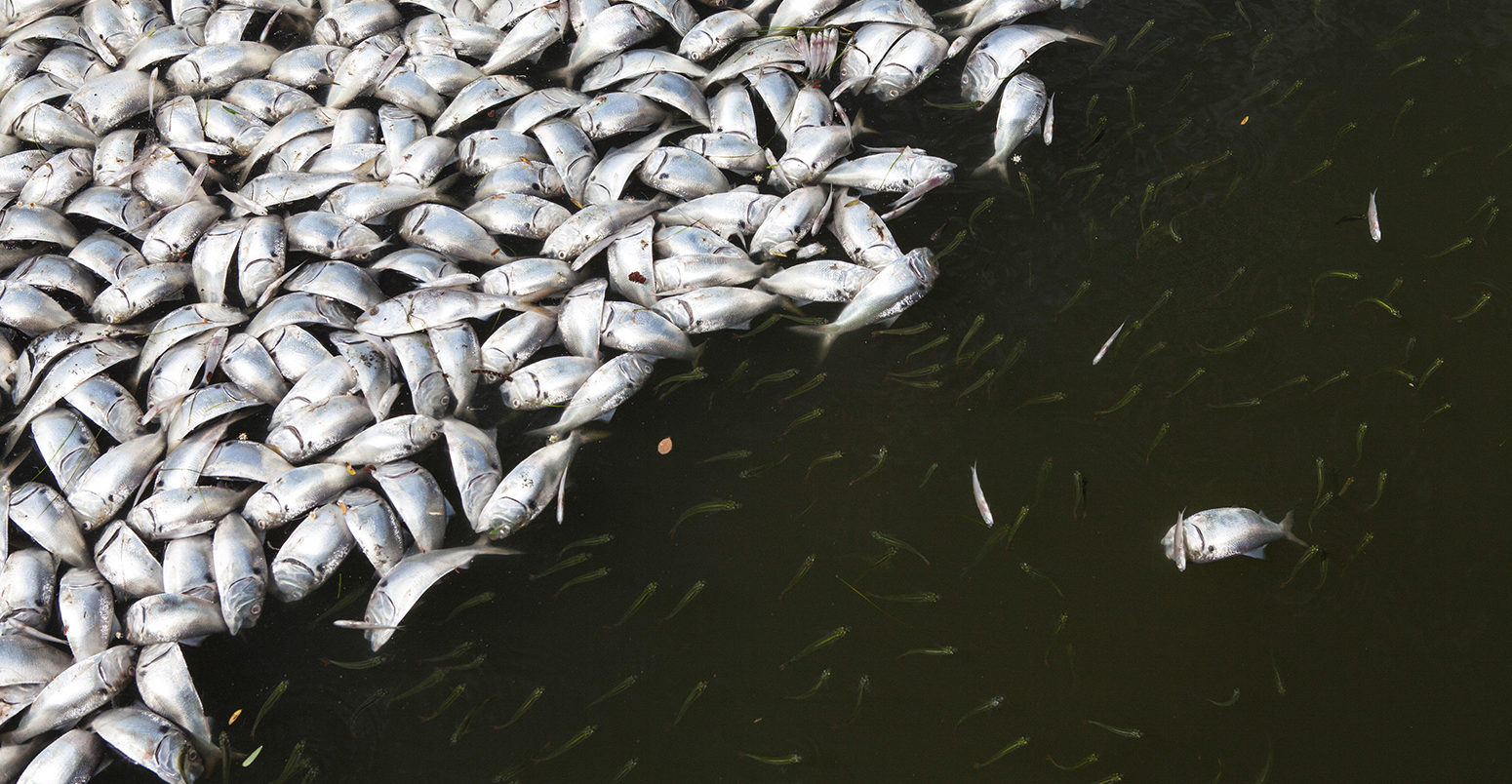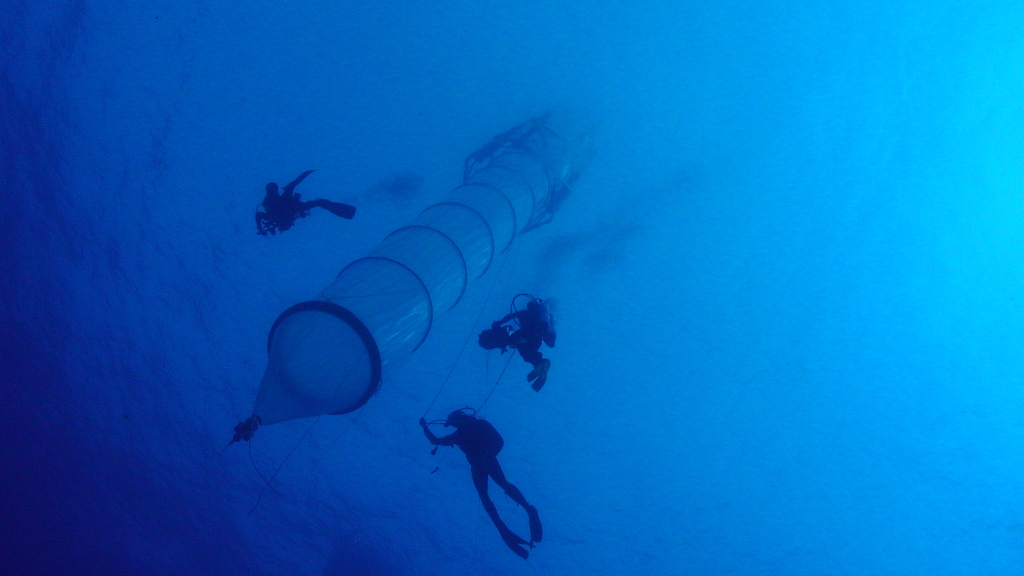
Rising CO2 levels in the ocean could benefit toxic algae, study says
Daisy Dunne
11.19.18Daisy Dunne
19.11.2018 | 4:00pmRising levels of CO2 in the ocean could spark blooms of toxic algae capable of causing harm to marine life and human health, a new study suggests.
Experimental evidence collected by researchers in the Canary Islands finds that one species of toxic algae, Vicicitus globosus, can become dominant in marine ecosystems that have experienced high amounts of “ocean acidification” – a process which occurs as seawater absorbs CO2 from the atmosphere.
The findings suggest that this type of toxic algae, which is found off the coasts of southeast Asia, Europe and the Americas, could pose a new threat to “coastal communities, aquaculture and fisheries” under climate change, the authors say.
Lethal levels
The impacts of toxic algae are felt around the world. In Australia, toxic blue-green algae has blighted up to 1,700km of the Murray River for several successive years – restricting the amount of safe water available to drought-stricken farmers.
The US, meanwhile, has faced at least 510 reported cases of toxic blue-green algae since 2010, with 239 of these events occuring in the last year alone, according to the non-governmental organisation Environmental Working Group. Florida’s coastline is facing an additional threat from “red tide” algae, which has proven fatal to whale sharks, manatees and sea turtles.
The main cause of toxic algal blooms is thought to be fertiliser run-off and poor water management, which lead to excess nutrients being released into the ocean.
However, scientists have also suggested that warming sea temperatures could be helping toxic algae to flourish. And, in some regions, the intensification of rainfall as a result of climate change could be quickening the rate at which fertilisers are washed into the sea.
The new study, however, shows, for the first time, how rising CO2 levels in the ocean could also aid the spread of one species of toxic algae. V. globosus is a widespread algae that can release harmful chemicals known as “cytotoxins”, says Prof Ulf Riebesell, a biological oceanographer from GEOMAR Helmholtz Centre for Ocean Research and lead author of the research published in Nature Climate Change. He tells Carbon Brief:
“Blooming of this species has been associated with fish mortality in coastal waters and aquacultures in various locations. Direct effects on dolphins and turtles have not been reported, but can also not be excluded.
“Humans should not go swimming in waters where V. globosus is blooming because the toxins may irritate eyes and the respiratory system.”
The research suggests that V. globosus could benefit from “ocean acidification”, a process which occurs as seawater absorbs CO2 from the atmosphere. (The oceans have absorbed around 30% (pdf) of the CO2 released by human activity since the industrial revolution.)
This causes oceans, which are alkaline, to become less alkaline over time. The overall pH of seawater has fallen from around 8.2 to 8.1 from pre-industrial times to the present day.
Underwater test tubes
To understand how ocean acidification could impact V. globosus and other marine microorganisms (also known as plankton), the researchers set up an experiment at a test site off the coast of Gran Canaria. Riebesell explains:
“We deployed nine sea-going “mesocosms” – kind of like giant test tubes [pictured below]. Each mesocosm consists of a flotation frame at the sea surface, which holds a 15-metre-long plastic tube vertically in the water. The tubes contain 35 cubic metres of seawater and enclose a natural plankton community.
“The enclosed water column was enriched in CO2 to levels expected for different CO2 emission scenarios. We then closely monitored the development of the plankton community over 57 days.”
The researchers found that, in mesocosms where CO2 levels were close to today’s levels, the presence of V. globosus within the experimental ecosystem remained relatively low.
However, in mesocosms where the concentration of CO2 rose above 600μatm (micro atmospheres), numbers of V. globosus began to rapidly increase. Riebesell explains:
“If CO2 emissions continue at current rates [as in the high-emissions scenario “RCP8.5” scenario], this level will be reached within the next three to four decades. If CO2 emissions are reduced rapidly and drastically to the extent that the Paris Agreement and we stay below 2C of warming, we may actually stay below 600µatm CO2.”
![]()
(For reference, CO2 levels in the seawater around Gran Canaria currently average around 400μatm, according to an earlier research paper by the same group of scientists.)
Under the highest CO2 levels, the amount of V. globosus increased exponentially to form harmful blooms, the research finds.
The rapid growth of V. globosus also appeared to have a harmful impact on other species in the plankton community, Riebesell says:
“Our study also shows that the blooming of V. globosus in our mesocosms disrupted the pelagic [open sea] food web by suppressing the growth of micro- and mesozooplankton [animal microorganisms]. This is important because zooplankton are food for higher trophic levels, including fish and baleen whales.”
‘Emerging threat’
It is still not clear why V. globosus appears to benefit disproportionately from rising CO2 levels in seawater, Riebesell says:
“Either the algae benefits disproportionately compared to other competing species in terms of its growth rate, for example through increased photosynthesis under elevated CO2. Or, its toxicity increases with rising CO2 – so that it is eaten less.”
The findings reinforce the body of evidence suggesting that taking strong actions to limit global warming could reduce the threats to wildlife and humans, he says:
“First and foremost, these results emphasise the need for a strong and rapid reduction of CO2 emissions.
“The results of this study should be regarded as a warning call. An emerging threat for human society lies in being unprepared for range expansions of toxic microalgae in currently poorly monitored areas.
Riebesell, U. et al. (2018) Toxic algal bloom induced by ocean acidification disrupts the pelagic food web, Nature Climate Change, doi:10.1038/s41558-018-0344-1
-
Rising CO2 levels in the ocean could benefit toxic algae, study says
-
‘Ocean acidification’ could benefit toxic algae, study says


